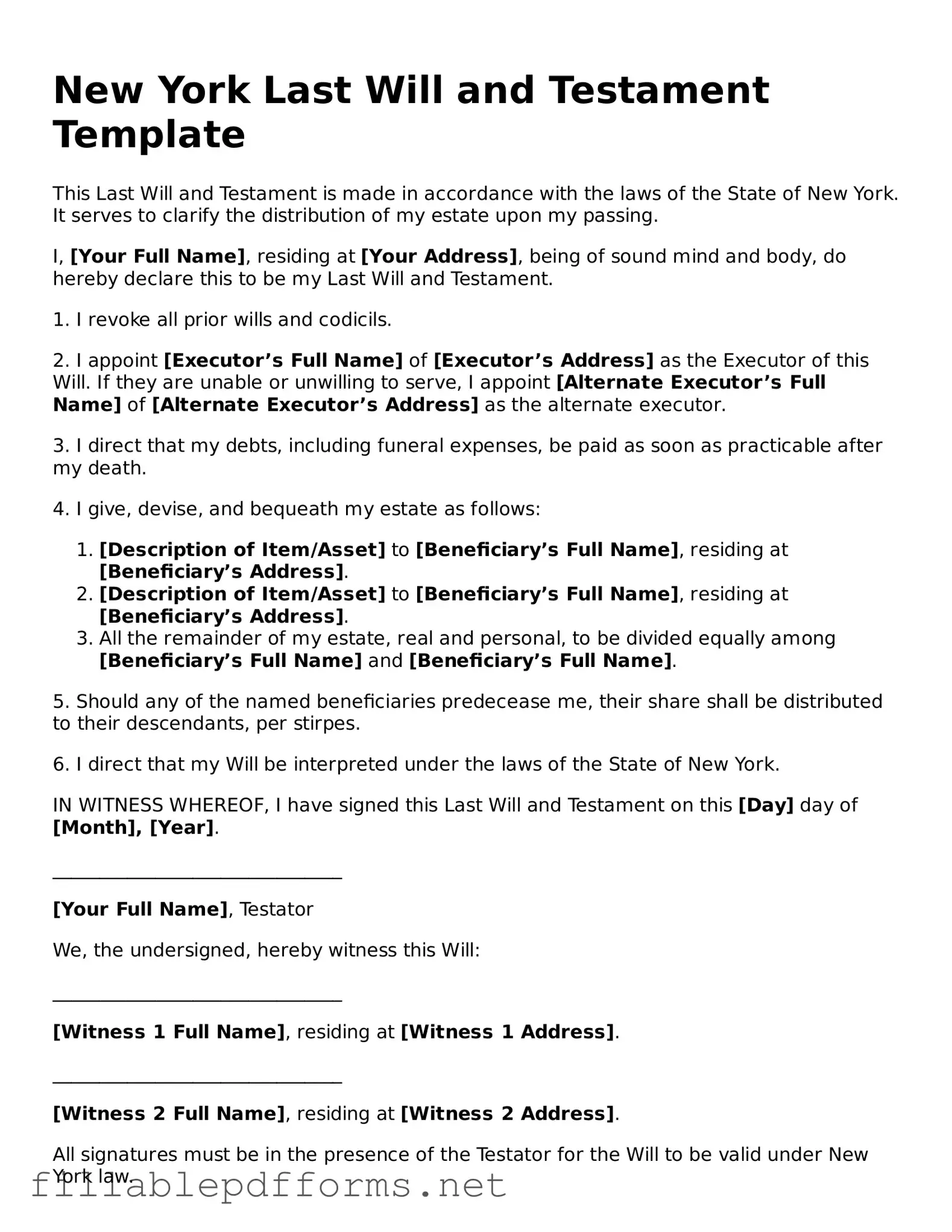Attorney-Verified Last Will and Testament Form for New York State
A Last Will and Testament form in New York is a legal document that outlines an individual's wishes regarding the distribution of their assets after their passing. This form serves as a crucial tool for ensuring that personal belongings and financial matters are handled according to one's preferences. By creating a will, individuals can provide clarity and peace of mind for their loved ones during a difficult time.
Launch Editor Here
